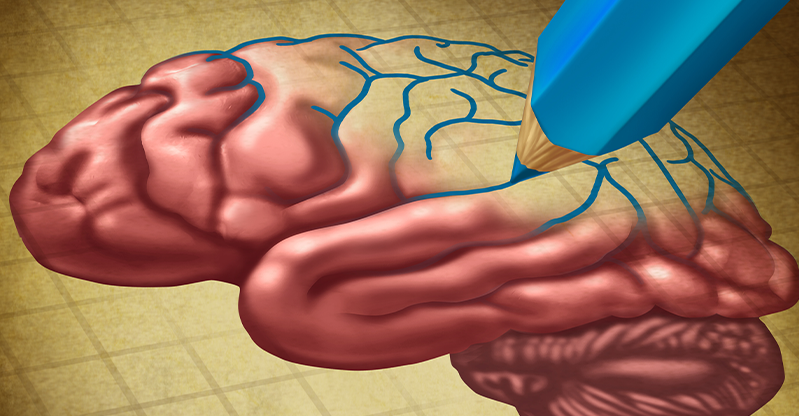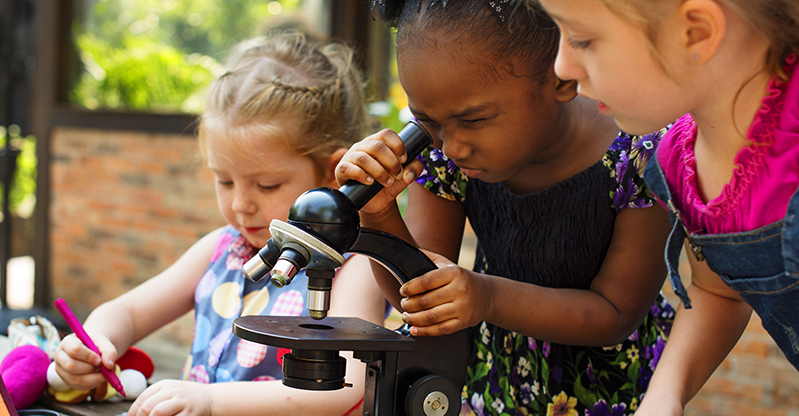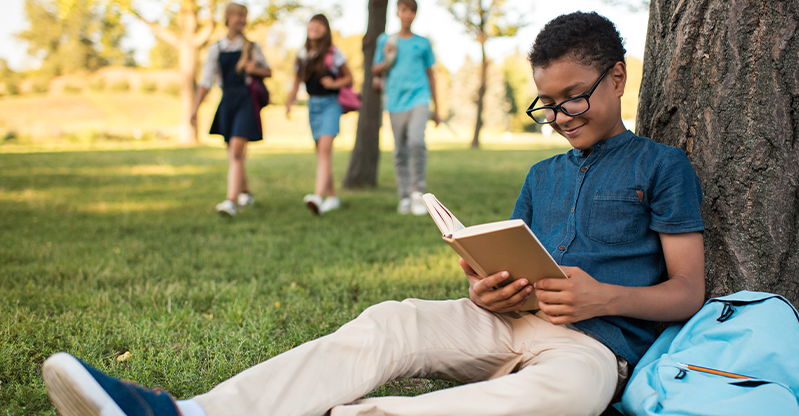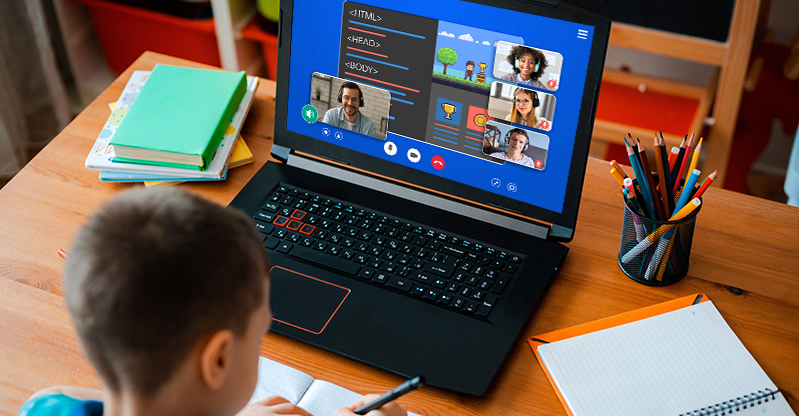Critical thinking. The ability to think for yourself. To not be swayed by the masses. To critically analyze books, movies, and news to have an original opinion on the subject. And also, to totally avoid being signed up for a cult where the leader has three wives, and the members all drink Cool-Aid. This is what you want for your child because it is so critical in the modern era to be a freethinker — meaning a person who contributes to the society of ideas by pooling their unique perspective into the mix.
How critical thinking teaches the brain to think differently
Essentially, critical thinking is a form of analysis. It uses the available facts, credible evidence, keen observation, deduction, and arguments to form an opinion about the subject. It is, in a sense, open-minded, which means not allowing preconceived ideas or notions to get in the way of the thought process. And it is self-corrective; if new evidence comes to light, this form of thinking allows it to shift the original opinion. It certainly means not accepting whatever is said, especially from an authority figure, as the truth without considering all we have mentioned. This resilience to automatically accepting the correctness of a statement by those with influence is what safeguards your child from being “brainwashed” into falling for propaganda and other dangerous ways of thinking.
It also allows your child to critically evaluate and form unbiased opinions on subjects such as literature, movies, and the news without giving sway to popular belief. And especially on the subject of literature and art appreciation, it allows for carefully considered reflection on the subject matter at hand and what can be gleaned from it.
As such, it’s an essential piece of the toolkit of the mind that all children should be taught from as young an age as possible. And that’s what we’ll help you encourage in them today.

What critical thinking is (and what it is not)
✅ Critical thinking is thinking for yourself
✅ Critical thinking is open-mindedness
✅ Critical thinking is about taking an idea as far as it can go to see where its weaknesses lie
✅ Critical thinking is seeking the majority of experts (in the relevant field) opinion
✅ Critical thinking is supporting your opinion with logical arguments
✅ Critical thinking is having the ability to completely shift your entire worldview if suddenly new evidence comes to light

❎ Critical thinking is not taking someone’s opinion as fact
❎ Critical thinking is not being closed off to ideas that don’t fit your viewpoint
❎ Critical thinking is not being critical because you don’t like the person who espouses the idea
❎ Critical thinking is not cherry-picking the facts that suit your viewpoint while ignoring the ones that don’t
❎ Critical thinking is not supporting your opinion with pre-conceived biases
❎ Critical thinking is not about holding onto a position no matter what

Essentially, the truth is that critical thinking is about being open-minded, and also analytical about the information one absorbs. So, for instance, conspiracy theories — in their common usage, meaning outlandish fantasies — would be evaluated using objective thoughts and logical arguments, and not a desire for “answers” that “reveal the truth” about why certain events happen.
So, being open-minded doesn’t mean accepting any old idea. It means taking things with a grain of salt. At the same time, critical thinking isn’t about finding reasons to reject a view that’s different from yours. Instead, it’s about considering the merits of that view and looking at the contradictions in your own. Taking that viewpoint to its logical conclusion is an integral part of the critical thinking process. And adjusting one’s understanding of reality frequently occurs when one engages with critical thinking.
Sometimes, that means completely unlearning what biases you may have developed throughout your life. How this applies to your child would be getting them into this mode of thinking as young as possible, so they’re not easily swayed by popular, but incorrect, ideas. So how to get them thinking critically?
Three simple ways to get kids into critical thinking
The Importance of Play
Right off the bat, the easiest way to start implementing critical thinking skills in young children is simply allowing them to play. Playing is a natural part of a child’s development, and they often use it to roleplay other identities, like their favorite superheroes. This automatically places them in the minds of another. This is important because they get to experiment as “being someone else”, with a different perspective from their own.

You can encourage it by buying them outfits that suit different roles. They can then “play” these roles and thereby start getting a sense of empathy. For instance, if you were to give them a small lab coat, they can roleplay as scientists on the frontier of some ridiculously fantastic technology that will change the world. Not only will they play a different kind of hero from the ones they usually play as, but they’ll also get the importance of science itself. Which, idealistically, is built around making the world a better place for all of us. Speaking of science:
Introduce them to The Scientific Method (and Rationality)
Whatever you believe in, religion or ideologically wise, you’ll agree that, when one thinks about it, the Scientific Method is a pretty good approach to viewing the world and thinking about it critically. It all stems from the concept of a scientific theory.
For those unfamiliar with how a scientific theory works, it essentially has three parts:
- Observation of the world around us
- Formulating a working hypothesis based on that observation; and
- Making predictions based on that hypothesis. If the predictions hold up, it results in a scientific theory.
Let’s take the theory of flight, for instance. We observe how birds fly by generating “lift” with their wings. Lift is the force that allows birds to ascend. From that observation comes the hypothesis that if we develop machines with wings with their own power to create “lift”, those machines would fly.
Leonardo da Vinci was the first person to make this observation, and four centuries later, the right brothers came along… and they, the Wright Brothers, made such a machine. Generating “lift” through thrust (the propeller of the airplane generating force) and wings allowed the machine to fly. Thus, this prediction held true and became a scientific theory: The Theory of Flight, or Aerodynamics. As you can no doubt tell, a scientific theory is not just “any old theory”, but one made with facts and evidence based on the initial hypothesis following observations.
And this makes the perfect story to explain to your children what scientific thinking is like. Many children would love to know precisely how flight is possible. And now you can tell them while educating them in scientific thinking from one of history’s greatest scientific minds, the true polymath da Vinci! They’ll be impressed that Leonardo is not just a mutant turtle wielding two samurai swords with ninja skills.
By applying scientific thinking to their everyday lives, they can have fun trying to explain much of the world’s phenomena. Especially as children are naturally curious about how things work! Then, they can discover how accurate they are through age-appropriate books on the subject. What this teaches them is both to use their observations about the world to formulate a possible reason why something happens and then to test it out: this also relates to. This unified educational system has become important to many children’s education.

Read, Read, Read!
Nothing quite helps critical thinking like getting children into reading, especially when they reach the age of about eight years, when they can read full-page books on their own. They’ll probably end up with a favorite author and want to ravage all those books. But it’s important to read not just fiction, but non-fiction, too. And autobiographies are great because it exposes children to a person’s personal perspective. There’s a saying about walking a mile in another man’s moccasins.
Books about history, but from different angles on the same events, force a child to think about what is more likely to have occurred. It will encourage them to form an opinion on an open-subject matter. Then there’s some prompting you can do. Engage with your child about the books they’ve read, what they liked and disliked about them — and why.
And don’t leave it just at books: go further. When they watch current events with you on the news, don’t just espouse your opinion on it; ask for theirs’s first. Ask them why they have that take on the subject. It will encourage them to form opinions with arguments they can use to back it up. But challenge them too. Don’t let them off the hook too quickly; they need to learn how to defend their viewpoints — or be willing to change them if necessary.

What Do These Three Exercises Mean?
The first, Play, encourages empathy and new viewpoints. The second, the scientific method, encourages rational thought and discourse. And the third, reading critically, promotes the formation of ideas and opinions on the foundations laid by the first two.
Go further: get them the supplemental education to think critically
Our e-school, Tekkie Uni, is the perfect playground for learning to think critically. There is certainly a big focus on the hard skills of the individual courses, such as Coding for Kids, App Development, YouTube Content Creation, and others. But that’s not all we’re about. We’re proud of the space we’ve created in our classrooms that allow children to make mistakes while trying to figure out their own solutions. And the spirit of collaboration between students is a humbling sight. Seeing these youngers cooperate to help each other develop and grow in skill and emotional intelligence is something special.
Children get guided instead of being told what to do. Our instructors work hand-in-hand with these kids to learn and uplift themselves through our various courses. The students collaborate on projects, lending their skillsets to the mix. Learning teamwork is essentially the individual getting ten times what they put in. They make their own decisions and become empowered by leadership roles.
So whatever course you might be interested in enrolling your child in at Tekkie Uni, you can be sure you’re not just investing in their technical education. But in the full growth potential of their character as well. So, enroll them now.










God, you’re incredible! I can’t recall ever reading anything like it. What a relief to discover someone who has fresh ideas about this. Your initiative in launching this is truly appreciated. Someone with some creativity is really required on the web, and this website provides that.